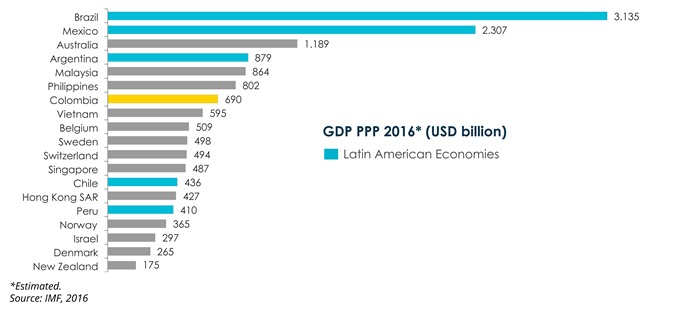 Life & Style
Life & Style

On Colombia’s National Day, July 20, the Colombian embassy presents a development roadmap that the conflict-ravaged South American nation will pursue as a new era of peace dawns on its horizons.
On Colombia’s National Day, July 20, the Colombian embassy presents a development roadmap that the conflict-ravaged South American nation will pursue as a new era of peace dawns on its horizons.
A new era has begun for Colombia, one of peace and prosperity thanks to the end of long internal conflict. We can now look to the future and forge a new cycle of economic growth.
Exports are expected to grow 12 per cent by 2024, reaching US$61.4 billion.
In 10 years, it is expected that tourism will double, reaching 8.8 million tourists, prioritising former conflict zones:
• Sierra de la Macarena (Meta)
• Trech to Teyuna (The Lost City)
• Putumayo
• Urabá– El Darién (Antioquia – Choco)
Peace will have a positive effect on the country’s economy.
 |
| Ambitious targets: Colombia plans significant growth in all key sectors.— Source ProColombia, 2017 |
Key factors to grow Colombia’s economy are:
1. A dynamic and stable economy
2. A growing market located strategically to facilitate business transactions within the region.
3. A trade platform with more than 10 free trade agreements enabling investors to reach third markets.
4. Multiple development centres and regions coupled with a growing middle class securing a greater products and services demand.
5. A growing pool of qualified Colombian companies able to partner with international investors to reach out to regional markets.
6. Diverse opportunities for investment in various sectors.
Colombia is the 31st largest economy in the world and the fourth in Latin America.
 |
| Good standing: Colombia is the 31th largest economy in the world and the 4th in Latin Amercia.— Source IMF, 2016 |
According to the World Bank’s Doing Business report, within the Latin American and Caribbean region, Colombia is:
#1 in getting credit
#1 in protecting minority investors
#2 in dealing with construction permits
#2 in ease of doing business
#3 in registering property
#5 in starting a business
Colombia was officially invited in May 2013 to initiate the process to become a full member of the Organisation for Economic Co-operation and Development (OECD).
International tourism in Colombia grew three times more than the global rate, going from 3.4 million of tourists in 2012 to 5 million in 2016.
Investment opportunities
Infrastructure
There are some niches with opportunities.
Energy
A diversified source base and a pivotal location in the Americas.
Colombia ranked first in Latin America and eighth in the world according to the Energy Architecture Performance Index 2016 of the World Economic Forum.
More than 200 Power Generation projects registered in different stages, with installed capacity up to 7,000 MW
Other potentialities
Aquaculture, cocoa, cereals, fruits and vegetables, meat, processed food, rubber, and forestry.









